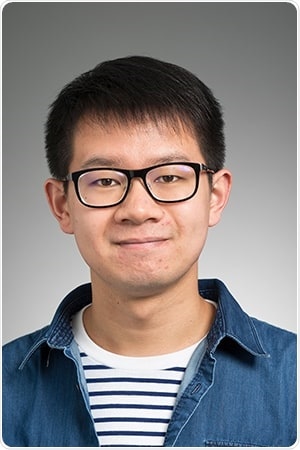The intricate folds and arrangements of protein and DNA bundles inside the microscopic boundaries of a single human cell instruct the fate of an individual—the genes that are expressed, the ones suppressed, and particularly if the individual stays healthy or develops a disease.

Ruochi Zhang. Image Credit: Carnegie Mellon University.
In spite of the prospective influences of these bundles on human health, not much is known about how genome folding occurs in the cell nucleus and how it impacts gene expression. However, a novel algorithm created by a group from Carnegie Mellon University’s Computational Biology Department provides a powerful tool for illustrating the mechanism at an unparalleled resolution.
The algorithm, named Higashi, is based on hypergraph representation learning—the form of machine learning that recommends music in an app and carries out 3D object recognition.
The research was headed by School of Computer Science doctoral student Ruochi Zhang along with PhD candidate Tianming Zhou and Jian Ma, the Ray and Stephanie Lane Professor of Computational Biology. Zhang named Higashi after a traditional Japanese sweet, maintaining a tradition he started with other algorithms created by him.
[Zhang] approaches the research with passion but also with a sense of humor sometimes.”
Jian Ma, Ray and Stephanie Lane Professor, Computational Biology, Carnegie Mellon University
The research was carried out as part of a multi-institution research center attempting a better knowledge of both the three-dimensional structure of cell nuclei and how changes in that structure impact cell functions in health and disease. The $10 million center was funded by the National Institutes of Health and is directed by CMU, with Ma as its lead principal investigator.
The study was published in the journal Nature Biotechnology.
The algorithm is the first tool to employ advanced neural networks on hypergraphs to offer a high-definition analysis of genome organization in single cells. A hypergraph combines multiple vertices to the edge, the single intersection of vertices, while an ordinary graph combines two vertices to a single intersection.
Chromosomes are composed of a DNA-RNA-protein complex named chromatin that folds and organizes itself to fit inside the nucleus of the cell. The mechanism sways the way genes are expressed by combining the functional elements of every ingredient closer together, permitting them to suppress or activate a specific genetic trait.
The Higashi algorithm performs with a rising technology called single-cell Hi-C, which generates snapshots of chromatin interactions taking place simultaneously in a single cell.
Higashi offers a comprehensive analysis of chromatin’s organization in the single cells of complex tissues and biological mechanisms, and also how its interactions differ from cell to cell. This examination permits researchers to observe elaborate differences in the folding and organization of chromatin—including those that are delicate, yet crucial in pinpointing health implications.
The variability of genome organization has strong implications in gene expression and cellular state.”
Jian Ma, Ray and Stephanie Lane Professor, Computational Biology, Carnegie Mellon University
The Higashi algorithm enables researchers to examine other genomic signals jointly profiled with single-cell Hi-C simultaneously. In the long run, this feature allows widening of Higashi’s capability, which is timely, considering the growth of single-cell data Ma anticipates to see in the following years via projects like the NIH 4D Nucleome Program his center belongs to.
This stream of data would provide more opportunities to design more algorithms that would promote scientific knowledge on the organization of the human genome within the cell and its function in health and disease.
This is a fast-moving area. The experimental technology is advancing rapidly, and so is the computational development.”
Jian Ma, Ray and Stephanie Lane Professor, Computational Biology, Carnegie Mellon University
Source:
Journal reference:
Zhang, R., et al. (2021) Multiscale and integrative single-cell Hi-C analysis with Higashi. Nature Biotechnology. doi.org/10.1038/s41587-021-01034-y.